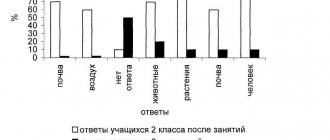Scientific research work on the topic: “The influence of music on humans”
It follows from this that music develops all types of perception and all types of memory (visual, auditory, motor, associative).
2.3 The influence of music on the human body.
Scientists recommend using music to treat certain diseases: (Slide 
The experience of the therapeutic use of music has a long history. Aristotle considered music to be a means of healing the body and purifying the soul. The outstanding physician Avicenna healed nervous patients with music a thousand years ago. In China, music has been used as medicine for centuries.
Harmonious melodies have a beneficial effect on a person, for example:
• Violin – heals the soul, helps self-knowledge, evokes compassion, has a very beneficial effect on melancholic people. • Organ – puts the mind in order. • Piano – affects the kidneys, bladder, cleanses the thyroid gland. • Drum – restores heart rhythm, stimulates the circulatory system. • Flute – cleanses the bronchopulmonary system, heals unhappy love, relieves irritation and anger. • Bayan, accordion – activates the work of the abdominal cavity. • Harp and string instruments harmonize the heart, treat hysteria and blood pressure. • Clarinet, piccolo flute – suppresses despondency, improves blood circulation. • Double bass, cello, guitar – affect the heart and small intestine, treat the kidneys. • Balalaika – treats the digestive organs. • Pipe – treats radiculitis.
Back in ancient Greece, scientists discovered that listening to certain musical compositions helps to recover faster and improves the well-being of patients.
Also, music has a strong influence on a person’s mental state. It is interesting that the famous Greek scientist Pythagoras began and ended the day with singing: in the morning - to clear the mind of sleep and cheer up, and in the evening - to calm down and tune in to rest.
2.4 Experiments by scientists proving the various influences of music.
But is all music equally useful?
Swiss scientist Hans Jenny studied the effect of sound on water (Slide 9). Under the influence of sound, a drop of water, vibrating, took the shape of a three-dimensional star or a double tetrahedron in circles. The higher the vibration frequency, the more complex the forms. But as soon as the sound died down, the most beautiful formations again became shaped like a drop of water. Japanese scientist Professor Emoto Masaru conducted experiments on the effects of various music, positive and negative statements on water. (Slide 10)
His experiments showed that the result of exposure to spiritual and classical music and words carrying positive energy is the formation of snowflakes of amazing beauty in ordinary water.
The influence of music on a person
Bibliographic description:
Dolgoborodova, D. A. The influence of music on a person / D. A. Dolgoborodova, V. A. Varentsov. — Text: immediate // Culturology and art history: materials of the III International. scientific conf. (St. Petersburg, July 2020). - St. Petersburg: Own publishing house, 2020. - pp. 48-50. — URL: https://moluch.ru/conf/artcult/archive/247/10884/ (date of access: 10.10.2020).
The most beautiful thing that most living organisms, including humans, have is the perception of sounds. During our lives we hear a huge number of them, and they are all different - we perceive some with delight, others vice versa. I think there are no people who would say that they do not like the sounds of nature that we can hear in those corners where there are no people nearby, be it a forest or just a meadow. Since ancient times, people have listened to them and tried to create similar ones in their lives, inventing various musical instruments for this. This is how music was born.
How does a person perceive sound?
Sound vibrations are perceived either through the hearing organs, which transmit the received information to special areas of the brain, or vibrations of a certain frequency directly affect the functioning of individual organs and the body as a whole.
In the first case, the brain, depending on the information received, sends signals to the organs that arise under its influence. In the second case, the mechanism of action of sound vibrations is as follows. Each organ works in its own special mode; the biorhythms of any healthy organ lie in a certain frequency range, common to the vast majority of people.
For example, the frequency of the heart and smooth muscles of internal organs is close to 7 Hz. Alpha mode of brain operation - 4-6 Hz. Beta mode - 20–30 Hz. When the frequency of a sound vibration coincides or approaches the frequency of the biorhythms of a particular organ, the well-known phenomenon of resonance (intensification of vibrations) or anti-resonance (suppression of vibrations) occurs. Cases of so-called incomplete resonance (partial coincidence of vibrations) are also possible. But, be that as it may, the organ begins to work in an unusual or completely disharmonious rhythm for it, which can lead to the development of pathology of both this organ and the entire organism as a whole. A person hears sound vibrations with an average frequency of 20 Hz to 20 kHz.
Above this range, the region of ultrasonic vibrations begins, but in general, vibrations from 2 to 10 Hz have a direct effect on the body. In addition, a number of additional factors that also affect our body should be separately listed:
- Sound volume (above 20 dB painful sensations appear, and at 150 death is possible).
- Noise. The so-called “white noise” (background noise) is especially influential. Its level, which is approximately 20–30 dB, is harmless to humans, as it is natural.
- Duration of exposure to sound vibrations. Any noise of sufficient intensity and duration of exposure can lead to a decrease in hearing sensitivity and some functional ailments.
We must not forget that music and any sound in general act not only as physical factors, that is, as a certain vibration frequency, but also contain a kind of psycho-emotional associative series. Of course, it also affects humans. Let us give some examples of the influence of music on a person.
From ancient times, knowledge has come to us about the impact of various musical modes on a person’s mood. Thus, with the help of the Alexandrian mode they helped to create a solemn mood, the Indian mode contributed to the harmonization of the human body and consciousness, and the Phrygian mode was indispensable in military affairs. Music has the most profound impact on those who are prepared to perceive it. Active, attentive listening to harmonious pieces of music can effectively elevate consciousness, feel inspired and, at the same time, significantly contribute to our health. In ancient times, certain rhythms and harmonies were used as an anesthetic. Currently, this method of pain relief is used in some dental clinics in the United States.
Beautiful music stimulates intellectual activity and gives inspiration. Many writers and poets composed their works while or after listening to music.
Currently, music is also used in medicine. Music therapy is one of the most interesting and as yet little researched areas of traditional medicine. The therapeutic effect of this technique is based on the frequency vibration of musical sounds that resonate with individual organs, systems or the entire human body as a whole. Music therapy was officially recognized in Europe in the 19th century, when many advanced doctors began to use it in their practice. But the heyday of this area of medicine and psychotherapy occurred already in the 20th century.
There are four main directions of the therapeutic effect of music therapy:
1) Emotional activation during verbal psychotherapy:
2) Development of interpersonal communication skills (communication functions and abilities);
3) Regulatory influence on psycho-vegetative processes;
4) Increasing aesthetic needs.
The mechanisms of the therapeutic effect of music therapy include: emotional release, regulation of the emotional state, facilitating awareness of one’s own experiences, confrontation with life problems, increasing social activity, acquiring new means of emotional expression, facilitating the formation of new relationships and attitudes.
Music therapy comes in two main forms: active and receptive. Active music therapy is a therapeutically oriented, active musical activity: reproduction, fantasy, improvisation with the help of the human voice and selected musical instruments.
You can use an active version of music therapy. It requires the presence of simple musical instruments. Group members are encouraged to express their feelings or conduct a dialogue with any of the group members using selected musical instruments.
Choral singing can be considered as an option for active music therapy.
Receptive music therapy involves the process of perceiving music for therapeutic purposes. In turn, receptive music therapy exists in three forms:
1) Communicative (listening to music together, aimed at maintaining mutual contacts, understanding and trust);
2) Reactive (aimed at achieving catharsis);
3) Regulatory (helping to reduce neuropsychic tension).
Receptive music therapy is most often used. Group members are invited to listen to specially selected musical works, and then discuss their own experiences, memories, thoughts, associations, fantasies that arise during listening. In one lesson, they listen, as a rule, to three works or more or less completed excerpts (each for 10–15 minutes).
What does modern medicine say about the impact of music on people’s health? Over the past decades, hundreds of experiments have been conducted, many scientific papers have been written, and thousands of articles have been published in serious medical publications. Here are some facts from the world of medicine confirming the positive effect of music on health and the human body
– Scientists from Hong Kong have found that music lessons develop children’s memory and mental abilities. Their long-term observations proved that without any special memory exercises, a person's memory improved in proportion to how long he studied music as a child.
– Another proven fact of the positive effect of music on human health is the fact that sonorous melodies help recovery after heart surgery. Listening to joyful and cheerful music that can evoke positive emotions and good mood is recommended for the prevention of cardiovascular diseases. According to scientists, music helps a person improve blood circulation, lowers blood pressure, dilates blood vessels and slows down the heart rate.
– Scientists have found that sounds emanating at different frequencies and in a certain tonality can kill pathogens. When a plague epidemic engulfed cities in the Middle Ages, people kept ringing bells to cope with it. And it really helped. Today it is reliably known that the activity of microbes in the human body drops by 40% after listening to church music or bells for a long time.
– Music prevents hearing loss. This was found out during one of the simple experiments. 163 subjects, 74 of whom were former musicians, were asked to take several tests, the results of which showed that even seventy-year-old musicians heard speech in noisy environments and perceived sounds better than fifty-year-old non-musicians.
The sounds of music were born simultaneously with living beings capable of perceiving them. A lot of time has passed since then, sounds have turned into music, and music has become an art that is not forgotten today, continues to live with us, without leaving us for a moment. They began to study it as a science and discovered many healing properties that are increasingly used in everyday activities.
Literature:
- Sats N.I. Always with you. Pages of life. Ed. 2nd, add. M., “Det. lit.", 1978., 496 p.
- Kolov V. S., Rybakina E. L. Music in the flow of time. - M.: Mol. Guard, 1988., 318 p.
- Campbell D. J. The Mozart effect. \ Per. from English L. M. Shchukin. - Mn.: OOO “Potpourri”, 1999., 320 p.
Key terms
(automatically generated)
: music, organ, human body, time, sound, vibration, healing effect, positive influence of music, information received, group member.



